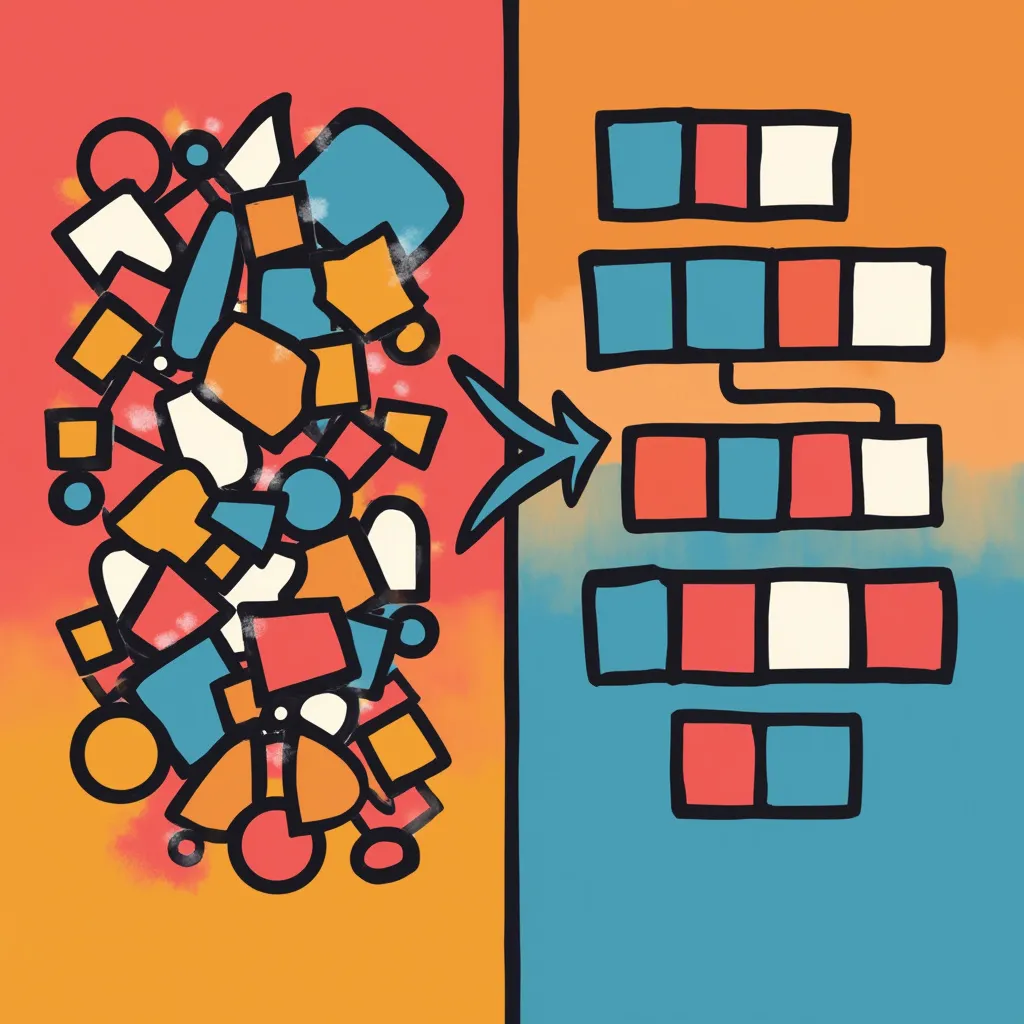In the ever-evolving landscape of software development, choosing the right programming language for your project can feel like trying to hit a moving target. Two languages that frequently find themselves in the crosshairs of this decision are Python and JavaScript. Both have garnered massive popularity and boast thriving ecosystems, but each shines in its own unique way. Let's dive into the nitty-gritty of these languages to help you make an informed decision for your next project.
The Python Perspective
Python, named after the British comedy group Monty Python (not the snake, contrary to popular belief - and one of my biggest nit-picks), has been around since the late '80s early '90s. Created by Guido van Rossum, Python has become renowned for its simplicity and readability.
Strengths of Python
-
Readability and Simplicity
Python's syntax is often described as "executable pseudocode." Or, as I like to say, "if you read Python code out-loud and you sound like a caveman, you've done it right!" Its use of indentation to define code blocks not only enforces consistent formatting but also makes the code structure visually apparent. This readability is a boon for both beginners and experienced developers, making it easier to write and maintain code.
-
Versatility
Python is often referred to as a "batteries included" language due to its comprehensive standard library. From web development to scientific computing, Python has tools and libraries for almost every conceivable task. This versatility makes it an excellent choice for a wide range of projects.
-
Data Science and Machine Learning
Python has become the de facto language for data science and machine learning. Libraries like NumPy, Pandas, and Scikit-learn have made complex data manipulation and analysis accessible to developers who aren't necessarily mathematicians or statisticians by training.
-
Large and Active Community
Python boasts a large, active, and sometimes contentious community that contributes to its ecosystem. This community support translates into a wealth of resources, third-party libraries, and frameworks that can significantly speed up development time.
-
Cross-platform Compatibility
Python code can run on various operating systems with minimal to no modifications, making it an excellent choice for cross-platform development.
The Python Ecosystem
Python's ecosystem is vast and varied, with tools and frameworks for almost every conceivable task. Here are some highlights:
-
Web Development
- Django: An opinionated, high-level web framework that encourages rapid development and clean, pragmatic design. I use Django for most of my startup projects.
- Flask: A lightweight web application framework designed to make getting started quick and easy, with the ability to scale up to complex applications. And, fun piece of trivia: sethserver has run on Flask for over a decade!
-
Data Science and Machine Learning
- NumPy: Provides support for large, multi-dimensional arrays and matrices, along with a collection of mathematical functions to operate on these arrays.
- Pandas: Offers data structures and operations for manipulating numerical tables and time series.
- Scikit-learn: A machine learning library featuring various classification, regression, and clustering algorithms.
- TensorFlow and PyTorch: Popular libraries for deep learning and neural networks.
- SpaCy: Industrial-Strength Natural Language Processing in Python.
-
Scientific Computing
- SciPy: A library used for scientific and technical computing.
- Matplotlib: A plotting library for creating static, animated, and interactive visualizations.
The JavaScript Juggernaut
JavaScript, despite its name, has no relation to Java or Sanskrit. The story goes that it was created by Brendan Eich in just 10 days in 1995. Initially designed as a scripting language for web browsers, JavaScript has evolved into a versatile language used both on the client-side and server-side.
Strengths of JavaScript
-
Ubiquity in Web Development
JavaScript is the only programming language that runs natively in web browsers, making it an essential tool for front-end web development. If you're building anything for the web, you'll likely need JavaScript.
-
Asynchronous Programming
JavaScript's event-driven, non-blocking I/O model makes it well-suited for building responsive user interfaces and handling concurrent operations efficiently.
-
Full-stack Development
With the advent of Node.js, JavaScript can now be used for server-side programming as well. This allows developers to use a single language throughout the entire stack, potentially increasing productivity and code reuse.
-
Rich Ecosystem
JavaScript has a vast ecosystem of libraries and frameworks. Whether you need a full-fledged framework for building complex single-page applications or a small utility library, chances are there's a JavaScript tool for the job.
-
Just-in-time Compilation
Modern JavaScript engines use just-in-time compilation, which can result in impressive performance for well-written JavaScript code.
The JavaScript Ecosystem
JavaScript's ecosystem is a cornucopia of tools, frameworks, and libraries. Here's a taste:
-
Front-end Frameworks
- React: A library for building user interfaces, particularly single-page applications.
- Vue.js: A progressive framework for building user interfaces.
- Angular: A platform for building mobile and desktop web applications.
-
Back-end Development
- Node.js: A JavaScript runtime built on Chrome's V8 JavaScript engine.
- Express.js: A minimal and flexible Node.js web application framework.
-
Full-stack Frameworks
- Meteor: An ultra-simple environment for building modern web applications.
- Next.js: A React framework that enables functionality such as server-side rendering and generating static websites.
-
Mobile Development
- React Native: For building native mobile applications using React.
- Ionic: A framework for developing hybrid mobile applications.
-
Desktop Application Development
- Electron: A framework for creating native applications with web technologies.
Choosing Between Python and JavaScript
Now that we've explored the strengths and ecosystems of both languages, how do you choose between them? Here are some scenarios where each language might be the better choice:
When to Choose Python
-
Data Science and Machine Learning Projects
If your project involves complex data analysis, statistical modeling, or machine learning, Python is likely your best bet. Its robust data science libraries and tools make it the go-to language for these tasks.
-
Scientific and Numerical Computing
Python's strong support for scientific computing makes it an excellent choice for projects in fields like physics, biology, or engineering that require complex calculations or simulations.
-
Automation and Scripting
For tasks involving system administration, file manipulation, or other forms of automation, Python's simplicity and extensive standard library make it an excellent choice.
-
Rapid Prototyping
Python's readability and concise syntax make it great for quickly building prototypes or minimum viable products.
-
Education and Teaching Programming
Python's clear syntax and focus on readability make it an excellent language for teaching programming concepts to beginners.
When to Choose JavaScript
-
Front-end Web Development
If you're building anything that needs to run in a web browser, JavaScript is not just the best choice it's often the only choice.
-
Full-stack Web Development
If you want to use the same language on both the front-end and back-end of your web application, JavaScript with Node.js is a compelling option.
-
Browser Extensions
For building extensions or add-ons for web browsers, JavaScript is the primary language used.
-
Mobile App Development
While not as common as native development, JavaScript frameworks like React Native allow for the development of mobile applications using web technologies.
Performance Considerations
When it comes to performance, both Python and JavaScript have their strengths and weaknesses. JavaScript, being designed for the web, is optimized for quick startup and responsiveness. Modern JavaScript engines use sophisticated just-in-time compilation techniques that can result in very fast execution for well-written code.
Python, on the other hand, is generally slower than JavaScript for computationally intensive tasks. However, Python's performance can be significantly improved by using libraries like NumPy, which are implemented in C and provide very fast operations on large arrays and matrices. It's worth noting that for most applications, the performance difference between Python and JavaScript will not be the deciding factor. Other considerations like developer productivity, available libraries, and suitability for the specific task at hand are often more important.
Community and Learning Resources
Both Python and JavaScript have large, active communities and a wealth of learning resources available. Python's community is particularly known for its focus on code readability and "doing things the right way." The Python Software Foundation provides extensive documentation and guides.
JavaScript's community is incredibly diverse, reflecting its use across many different domains of web development. Resources like MDN Web Docs provide comprehensive documentation for JavaScript and related web technologies.
Both languages have a multitude of online courses, tutorials, and books available for learners at all levels. Platforms like Codecademy, freeCodeCamp, and Coursera offer courses in both languages.
The Verdict
In the end, the choice between Python and JavaScript often comes down to the specific requirements of your project. If you're building a web application, particularly one with complex front-end interactions, JavaScript is likely to be your best choice. If you're working on data analysis, scientific computing, or machine learning tasks, Python will probably serve you better. Remember, the "best" language is the one that allows you to solve your problem effectively and efficiently. Both Python and JavaScript are powerful, versatile languages with thriving ecosystems. Whichever you choose, you'll have a wealth of resources and a supportive community to help you along your development journey. Happy coding!
-Sethers



